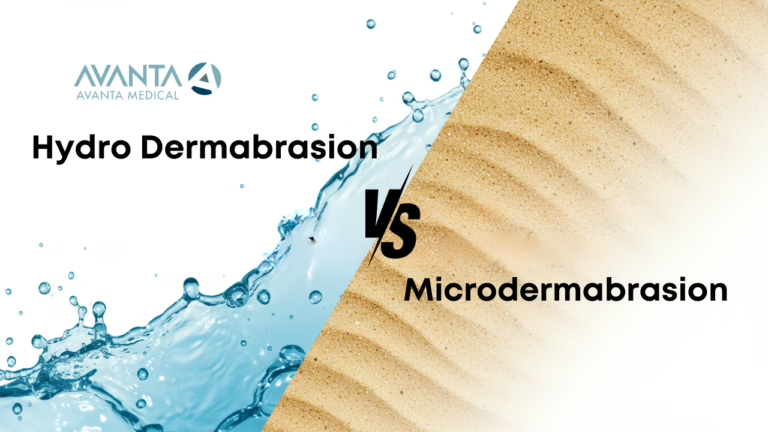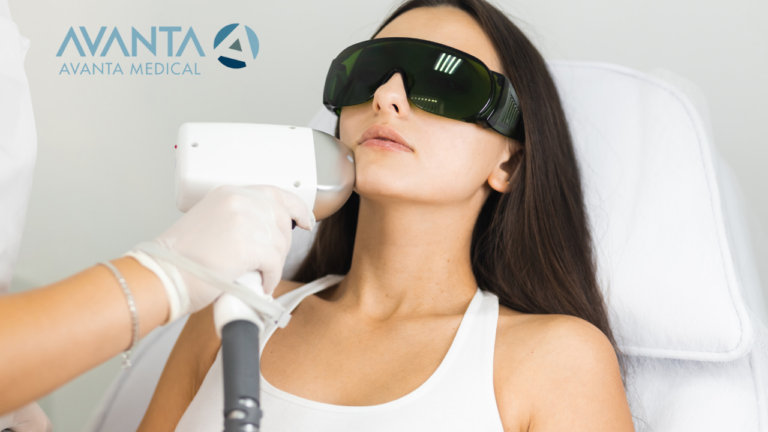Exploring the Combination of Semaglutide and CO2 Fractional Laser
In the rapidly advancing field of aesthetic medicine, innovative combinations of treatments are continually being explored to achieve optimal results for patients.
One such promising combination is Semaglutide and CO2 Fractional Laser therapy. While each treatment offers significant benefits on its own, their synergistic effects can potentially revolutionize the approach to skin rejuvenation and metabolic health.
This article delves into the intricacies of this combination, exploring the science behind each treatment, the benefits of their combined use, and considerations for clinical application.
Table of Contents
Understanding Semaglutide: A Breakthrough in Metabolic Health
Semaglutide is a medication originally developed to manage type 2 diabetes by regulating blood sugar levels. It belongs to a class of drugs known as GLP-1 receptor agonists, which mimic the hormone GLP-1 (glucagon-like peptide-1) to stimulate insulin secretion and inhibit glucagon release. This results in better blood sugar control and, over time, weight loss (Garber, 2010).
Semaglutide’s Role in Aesthetic Medicine
Recent studies have highlighted Semaglutide’s potential in the field of aesthetic medicine, particularly in weight management. By promoting weight loss, Semaglutide not only enhances metabolic health but also contributes to a more youthful and contoured appearance (Marso et al., 2016).
For patients seeking a comprehensive approach to their health and appearance, Semaglutide offers an innovative solution that addresses both internal and external factors.
CO2 Fractional Laser: A Gold Standard in Skin Rejuvenation
The CO2 Fractional Laser is a highly effective treatment for skin resurfacing, known for its ability to improve skin texture, tone, and elasticity.
By creating controlled micro-injuries in the skin, the CO2 Fractional Laser stimulates the body’s natural healing process, promoting the production of collagen and elastin (Hantash et al., 2007). This leads to a reduction in the appearance of fine lines, wrinkles, scars, and hyperpigmentation.
Benefits of CO2 Fractional Laser Treatment
The CO2 Fractional Laser is renowned for its ability to deliver dramatic results with relatively short downtime. Patients typically experience smoother, firmer, and more youthful-looking skin after just one treatment (Tierney et al., 2009).
The laser’s precision allows for targeted treatment, making it suitable for various skin types and concerns.
The Synergy Between Semaglutide and CO2 Fractional Laser
While Semaglutide and CO2 Fractional Laser are powerful treatments on their own, their combination offers a unique and holistic approach to patient care.
The metabolic benefits of Semaglutide complement the skin-rejuvenating effects of the CO2 Fractional Laser, providing patients with a comprehensive treatment plan that addresses both internal and external aspects of aging and wellness (Rodriguez, 2022).
Combining Semaglutide and CO2 Fractional Laser for Enhanced Results
When used together, Semaglutide and CO2 Fractional Laser can enhance each other’s effects. Semaglutide’s weight loss properties can lead to a more contoured facial structure, which can be further refined by the CO2 Fractional Laser’s ability to tighten and smooth the skin.
This combination is particularly beneficial for patients who are looking to achieve significant aesthetic improvements without undergoing invasive procedures (Rodriguez, 2022).
Clinical Considerations and Best Practices
When integrating Semaglutide and CO2 Fractional Laser into a treatment regimen, it is essential to consider patient selection, timing, and individualized care plans. Here are some key considerations:
Patient Selection
The ideal candidates for this combination therapy are individuals who are seeking both metabolic health improvements and skin rejuvenation.
Patients with a history of diabetes or obesity may particularly benefit from Semaglutide, while those looking to address signs of aging or skin imperfections may find the CO2 Fractional Laser to be an ideal solution (Marso et al., 2016; Hantash et al., 2007).
Timing and Sequencing of Treatments
To maximize the benefits of the Semaglutide and CO2 Fractional Laser combination, careful planning of treatment timing is crucial. Typically, Semaglutide is initiated first to stabilize metabolic health and begin the weight loss process.
Once the patient has achieved a certain level of weight loss, the CO2 Fractional Laser treatment can be administered to address skin laxity and other aesthetic concerns (Rodriguez, 2022).
Customization and Personalization
Each patient’s response to Semaglutide and CO2 Fractional Laser will vary, making it important to tailor the treatment plan to individual needs.
Factors such as age, skin type, and overall health should be considered when determining the dosage of Semaglutide and the intensity of the CO2 Fractional Laser treatment (Garber, 2010; Tierney et al., 2009).
Potential Risks and Side Effects
As with any medical treatment, there are potential risks and side effects associated with the use of Semaglutide and CO2 Fractional Laser.
Patients should be informed of these risks and monitored closely throughout their treatment journey.
Semaglutide Side Effects
Common side effects of Semaglutide include nausea, vomiting, and gastrointestinal discomfort. In some cases, patients may experience more severe reactions, such as pancreatitis or thyroid tumors.
It is essential to conduct thorough patient assessments and provide appropriate counseling before initiating Semaglutide therapy (Marso et al., 2016).
CO2 Fractional Laser Side Effects
The CO2 Fractional Laser is generally well-tolerated, but some patients may experience redness, swelling, and discomfort following the procedure.
These side effects are typically short-lived and can be managed with proper post-treatment care. In rare cases, patients may develop scarring or changes in skin pigmentation (Hantash et al., 2007).
Conclusion: A Promising Future for Combined Aesthetic and Metabolic Treatments
The combination of Semaglutide and CO2 Fractional Laser represents a cutting-edge approach to aesthetic medicine, offering patients a comprehensive solution that addresses both metabolic health and skin rejuvenation.
As research continues to explore the synergistic effects of these treatments, it is likely that their use will become increasingly popular in clinical practice.
By carefully selecting patients, timing treatments appropriately, and personalizing care plans, practitioners can maximize the benefits of this innovative combination therapy, helping patients achieve their aesthetic and health goals (Rodriguez, 2022).
If you’re interested in learning more about how the CO2Pro Fractional Laser can enhance your practice and deliver exceptional results for your patients, contact us today to explore the possibilities and receive detailed information tailored to your needs.
We’re here to support your journey in offering the best in aesthetic treatments.
FAQ: Semaglutide and CO2 Fractional Laser Combination
What is Semaglutide?
Semaglutide is a GLP-1 receptor agonist originally designed to manage type 2 diabetes by regulating blood sugar levels. It also promotes weight loss, making it valuable in both metabolic health and aesthetic medicine.
How does Semaglutide work in aesthetic medicine?
By promoting weight loss, Semaglutide enhances metabolic health and contributes to a more youthful and contoured appearance, addressing internal and external factors of aging.
What is the CO2 Fractional Laser?
The CO2 Fractional Laser is a gold-standard treatment for skin resurfacing. It improves skin texture, tone, and elasticity by creating micro-injuries that stimulate collagen and elastin production.
What are the benefits of combining Semaglutide and CO2 Fractional Laser treatments?
The combination offers a holistic approach, addressing both metabolic health and skin rejuvenation. Weight loss from Semaglutide enhances facial contours, while the CO2 Fractional Laser tightens and smooths the skin for a comprehensive aesthetic transformation.
Who are the ideal candidates for this combination therapy?
Semaglutide is typically started first to stabilize metabolic health and initiate weight loss. Once weight loss is achieved, the CO2 Fractional Laser treatment is administered to address skin laxity and aesthetic concerns.
Are there any risks or side effects associated with Semaglutide?
Common side effects include nausea, vomiting, and gastrointestinal discomfort. Severe cases may involve pancreatitis or thyroid tumors. Thorough patient evaluation is essential before starting treatment.
Works Cited
- Garber, Alan J. “Incretin-based therapies in the management of type 2 diabetes: rationale and reality in a managed care setting.” American Journal of Managed Care, vol. 16, no. 7, 2010, pp. S187-S194.
- Marso, Steven P., et al. “Semaglutide and cardiovascular outcomes in patients with type 2 diabetes.” New England Journal of Medicine, vol. 375, no. 19, 2016, pp. 1834-1844.
- Hantash, Basil M., et al. “Fractional photothermolysis: a novel aesthetic laser surgery modality.” Dermatologic Surgery, vol. 33, no. 5, 2007, pp. 525-534.
- Tierney, Eric P., et al. “Treatment of photodamaged skin with fractionated CO2 laser resurfacing: pilot study on patients’ assessments and histological analysis.” Dermatologic Surgery, vol. 35, no. 5, 2009, pp. 691-701.
- Rodriguez, Sergio. “Combining Aesthetic Treatments: The Efficacy of Integrating Metabolic and Skin Therapies.” Journal of Aesthetic Medicine, vol. 12, no. 3, 2022, pp. 158-165.








This design is steller! You definitely know how to keep a reader entertained. Between your wit and your videos, I was almost moved to start my own blog (well, almost…HaHa!) Great job. I really enjoyed what you had to say, and more than that, how you presented it. Too cool!
Thank you so much for such an uplifting comment! We’re thrilled to hear you enjoyed the design and content—it means a lot to know we could keep you entertained and inspired. Starting your own blog sounds like an amazing idea (we’d definitely read it!). If you ever need tips or inspiration, feel free to reach out. Thanks again for your kind words—too cool of you to say!